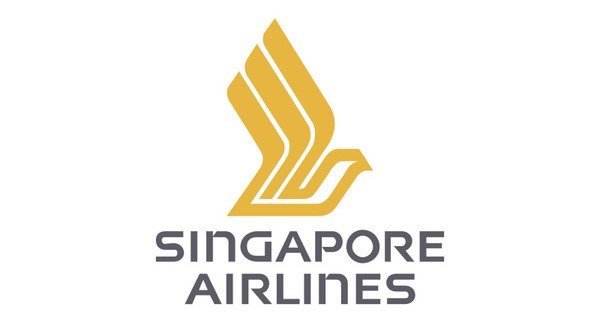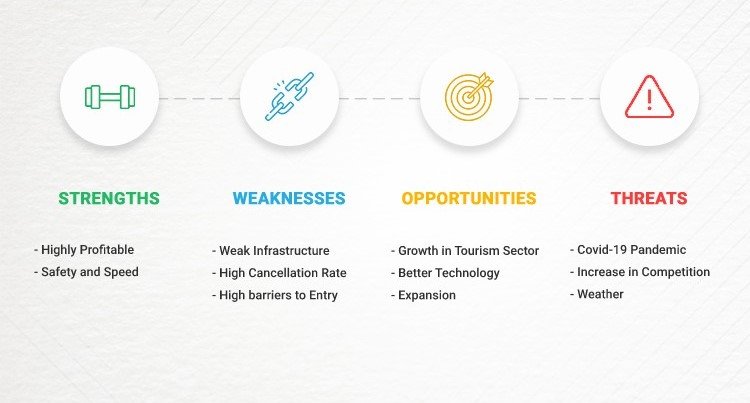Singapore Airlines SWOT analysis: Singapore Airlines, the flag carrier of Singapore is a seven-decade-old airline with its headquarters in Singapore. The airline, which has Singapore as its logo and uses the Singapore Girl as its branding image has its main hub at the bustling Changi Airport and operates flights across South Asia, South Asia, Asia Pacific, and trans-Pacific routes.
Alongside the business of airline travel, Singapore Airlines also has interests in the maintenance of aircraft as well as handling and engineering. Singapore Airlines is the eighth-largest air carrier in Asia and the sixth-largest worldwide. The airline has one of the most modern aircraft, which means they score very high in the safety of passengers.
The airline is also well-known for its high degree of high-quality service and for making its services as distinct as possible. With the size of its fleet, more than 114 aircraft, Singapore Airlines operates flights to 64 cities around the globe. The airline that will be a member of Star Alliance owns subsidiaries like Budget Aviation Holdings, Silk Air, Singapore Airlines Cargo, and SIA Engineering Company. The airline had a year-end turnover in the range of S USD 15.3 billion dollars and employs approximately 2457 individuals.
Singapore Airlines fun facts: Today, the Airbus A380 is nothing short of a legend. However, when it was very first introduced, it was Singapore Airlines that served as the operational test vehicle for these aircraft. They were the very first air carrier to take delivery of the Airbus A380 and try it out in real-world circumstances to see how people would like it. Clearly, their customers loved it and the rest is history.
About Singapore Airlines – SWOT analysis of Singapore Airlines
Contents
- 1 About Singapore Airlines – SWOT analysis of Singapore Airlines
- 2 Singapore Airlines Competitors
- 3 SWOT analysis of Singapore Airlines – Singapore Airlines SWOT analysis
- 4 Strengths of Singapore Airlines – Singapore Airlines SWOT analysis
- 5 Weaknesses of Singapore Airlines – SWOT Analysis Of Singapore Airlines
- 6 Opportunities of Singapore Airlines – Singapore Airlines SWOT analysis
- 7 Threats of Singapore Airlines – SWOT analysis of Singapore Airlines
- 8 Overview Template of Singapore Airlines SWOT analysis
[wp-svg-icons icon=”office” wrap=”I”] Company: Singapore Airlines Limited
[wp-svg-icons icon=”user” wrap=”I”] CEO: Goh Choon Phong
[wp-svg-icons icon=”user” wrap=”I”] Founder: Temasek Holdings
[wp-svg-icons icon=”calendar” wrap=”I”] Year founded: 28 January 1972, Singapore
[wp-svg-icons icon=”location-2″ wrap=”I”] Headquarters: Singapore
[wp-svg-icons icon=”stats” wrap=”I”] Annual Revenue: Singapore dollars3.82 billion
[wp-svg-icons icon=”bars” wrap=”i”] Profit | Net income: Singapore dollars85 million
[wp-svg-icons icon=”users” wrap=”I”] Number of employees: 14,375
[wp-svg-icons icon=”pie” wrap=”i”] Products & Services: Passenger Air Transportation | Air Cargo Transportation
[wp-svg-icons icon=”globe” wrap=”I”] Website: www.singaporeair.com
Singapore Airlines Competitors
[wp-svg-icons icon=”pacman” wrap=”I”] Competitors: Austrian Airlines | Qantas | Air France | Air New Zealand | China Southern Airlines | Qatar Airways | Kenya Airways | Cathay Pacific Airways
SWOT analysis of Singapore Airlines – Singapore Airlines SWOT analysis
SWOT Analysis Of Singapore Airlines is brand-based. SWOT Analysis of Singapore Airlines evaluates the brand’s strengths, weaknesses, opportunities, and threats. Advantages and disadvantages can be attributed to internal factors while opportunities and threats can be attributed to external factors. We will be discussing Singapore Airlines’ SWOT Analysis. Below is the detailed SWOT Analysis of Singapore Airlines.
Let’s talk about Singapore Airlines’ SWOT assessment.
Strengths of Singapore Airlines – Singapore Airlines SWOT analysis
- Strategist: Singapore Airlines has always focused on developing the best strategies for its operations. This includes the improvement of efficiency, operational efficiency and cost control, and the quality of services. These strategic areas are helping the brand achieve success.
- Luxurious class: The seat arrangement on Singapore Airlines is famous for the lavish suites created by French design guru Jean Coste which involve luxury seating that can be transformed into beds should the need arise. The luxury that is offered on A 380 aircraft also provides separate bathrooms that are shared by passengers equipped with Ferragamo toiletries, as well as other mattresses and bedding. The class of luxury also comes with customized gourmet meals for its passengers.
- Food served on the flight: Singapore Airlines put in place the Singapore Airlines International Culinary Panel in 1998. It is a group of top chefs from different parts of the globe, who will design the menu and meal plan for their high-end category passengers. Singapore Airlines also offers the privilege for Singapore Airlines First and Business Class passengers to avail” Book the Cook” service “Book The Cook” service on the day prior to departure, which allows the passenger to choose their preferred meals from the over 20 options on the menu, making it personal.
- Spending rules: Singapore Airlines follows the 4-3-3 spending rule. The airline allocates 40 percent to employee training as well as 30 percent to processes management and re-engineering and 30 percent to the development of new products development. A clear understanding of how budgets must be distributed has greatly helped the control of costs effectively.
- Effective Frequent Flyer Programmes: The company has always been focused on increasing customer satisfaction and its main segment has been focused on valued customers who typically fly in the luxury category. Therefore, their frequent flier programs are regarded as extremely well-known and centered around customer service. This includes personalization of services, a lot of freebies, and more.
Weaknesses of Singapore Airlines – SWOT Analysis Of Singapore Airlines
- Margins are low: In the wake of the rise of low-cost airlines, the operations of luxury airlines have suffered dramatically. The majority of luxury airlines are doing this to increase their margins, but they are failing at it because the costs are soaring however demand is not increasing. This has cut into the profits for Singapore Airlines which is an increasing problem.
- Capacity Problems: in comparison with other competitors such as China Southern Airlines, China Eastern Airlines, Air China, Emirates Airline and Qatar Airways, and Etihad Airways, SIA faces numerous problems with inadequate capacity, and there is constant demand fluctuation.
- The perception of a costly airline: Singapore Airlines is perceived by many customers as a luxury or expensive airline. Many customers aren’t even thinking about the airline as a choice for travel.
Opportunities of Singapore Airlines – Singapore Airlines SWOT analysis
- A preference for comfortable travel: As it has become more commonplace to travel, the rate of travel by air has increased, and the desire to spend has increased which means the average traveler is ready to spend extra to enjoy a more comfortable experience and this is a possibility for premium airlines like SIA.
Threats of Singapore Airlines – SWOT analysis of Singapore Airlines
- Competition: The airline faces lots of competition from companies like China Southern Airlines, China Eastern Airlines, Air China, Emirates Airline, Qatar Airways, and Etihad Airways.
You May Also Like:
- Best Buy SWOT Analysis – SWOT Analysis Of Best Buy
- Etisalat SWOT analysis – SWOT analysis of Etisalat
- Kinley SWOT analysis – SWOT analysis of Kinley
- Kellogg’s Corn Flakes SWOT analysis
- J.C. Penny SWOT analysis – SWOT analysis of J.C. Penney
Overview Template of Singapore Airlines SWOT analysis
This is the SWOT analysis of Singapore Airlines. Please let us know if you have additional suggestions to add.
[wp-svg-icons icon=”bubbles” wrap=”i”] Let us know What do you think? Did you find the article interesting?
Write about your experiences and thoughts in the comments below.


